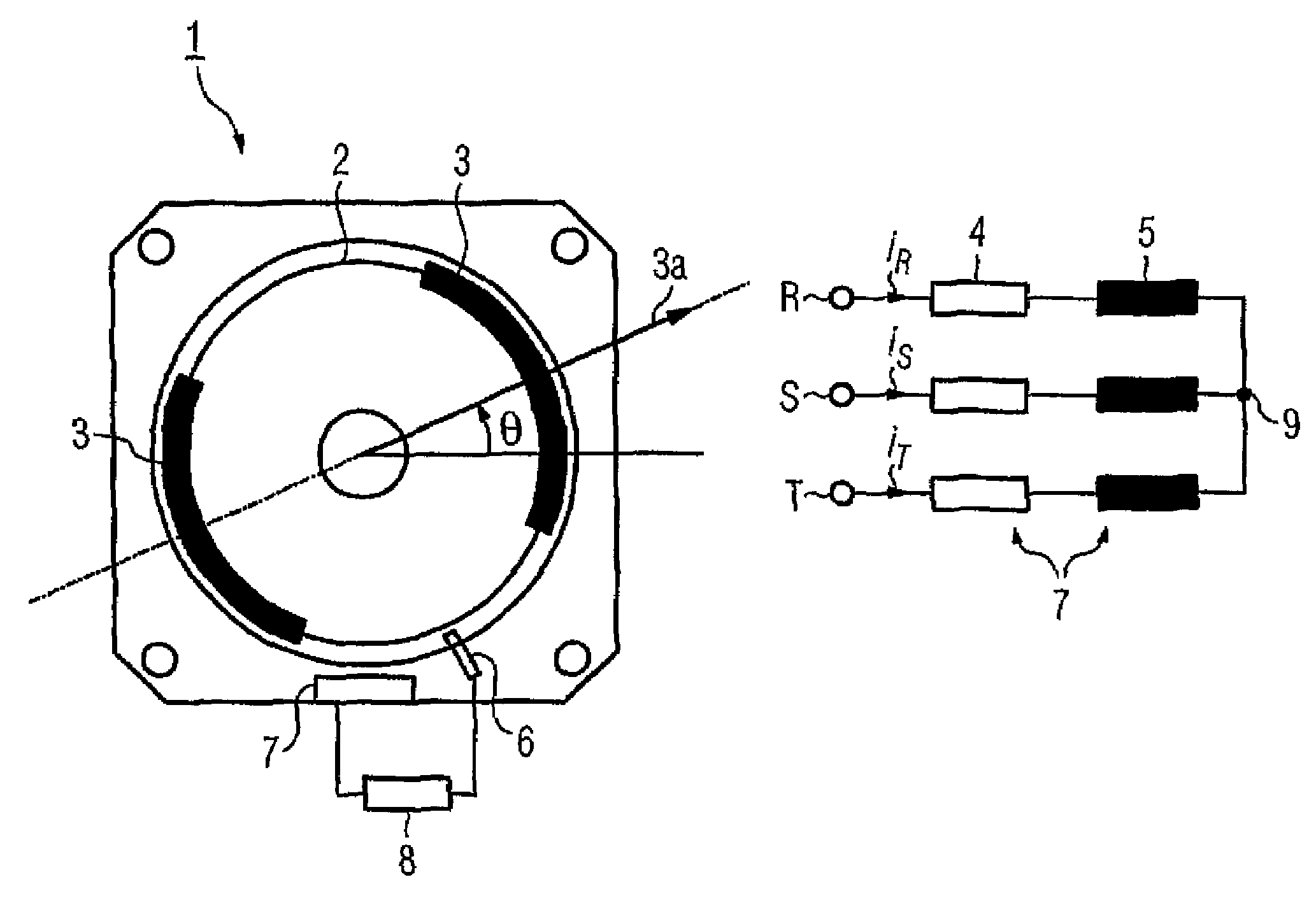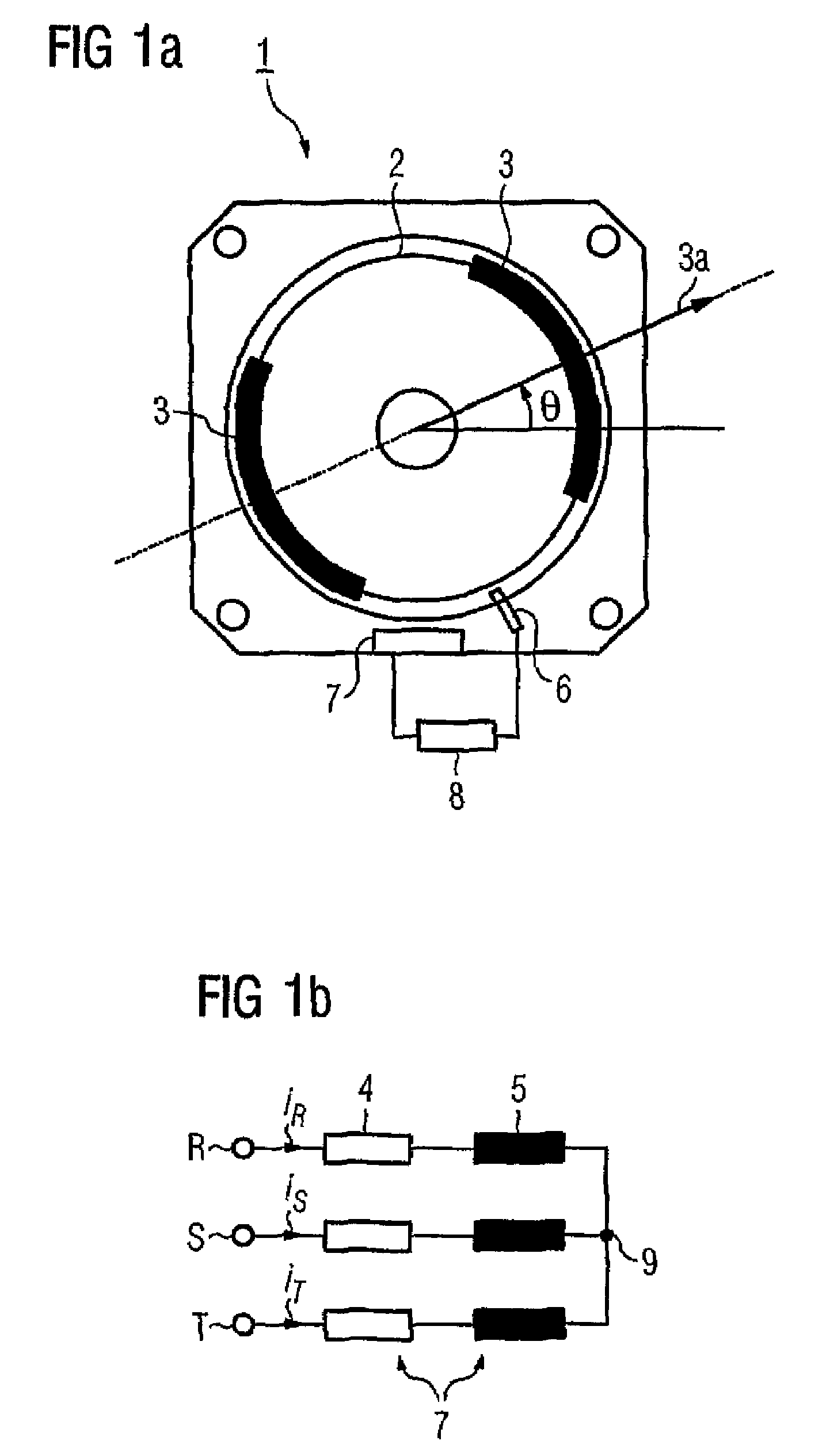Method and apparatus for determining the rotor position of an electric motor from the electric current and the angular acceleration
a technology of electric current and angular acceleration, applied in the direction of motor/generator/converter stopper, dynamo-electric converter control, instruments, etc., can solve the problems of insignificant hardware complexity of the absolute measurement system but also the incremental measurement system, and the magnitude of the amplitude of the movement which is excited by the known signal that is applied often represents a disadvantage, so as to increase the accuracy of the rotor position determination
- Summary
- Abstract
- Description
- Claims
- Application Information
AI Technical Summary
Benefits of technology
Problems solved by technology
Method used
Image
Examples
Embodiment Construction
[0019]FIG. 1a shows the cross section through a two-pole synchronous motor 1 with permanent-magnet excitation, which is also referred to for short in the following text as a motor. The rotor 2 of the electric motor 1 has two permanent magnets 3 which, together, produce a field flux in the direction of the arrow 3a. The angle θ that is shown in FIG. 1a, where −π≦θ2. An acceleration sensor 6, preferably a Ferraris sensor, is provided in order to measure the angular acceleration α; that is to say the second derivative with respect to time of the rotor position. An evaluation unit 8 interacts with the acceleration sensor 6, which is indicated only schematically, and with the stator windings 7, which are likewise indicated only by way of example in FIG. 1a, and (as will be explained in more detail in the following text with reference to FIGS. 3 to 5) firstly produces defined current pulses in order to induce an angular acceleration α of the rotor 2, secondly calculates the signal coming ...
PUM
 Login to View More
Login to View More Abstract
Description
Claims
Application Information
 Login to View More
Login to View More - R&D
- Intellectual Property
- Life Sciences
- Materials
- Tech Scout
- Unparalleled Data Quality
- Higher Quality Content
- 60% Fewer Hallucinations
Browse by: Latest US Patents, China's latest patents, Technical Efficacy Thesaurus, Application Domain, Technology Topic, Popular Technical Reports.
© 2025 PatSnap. All rights reserved.Legal|Privacy policy|Modern Slavery Act Transparency Statement|Sitemap|About US| Contact US: help@patsnap.com



